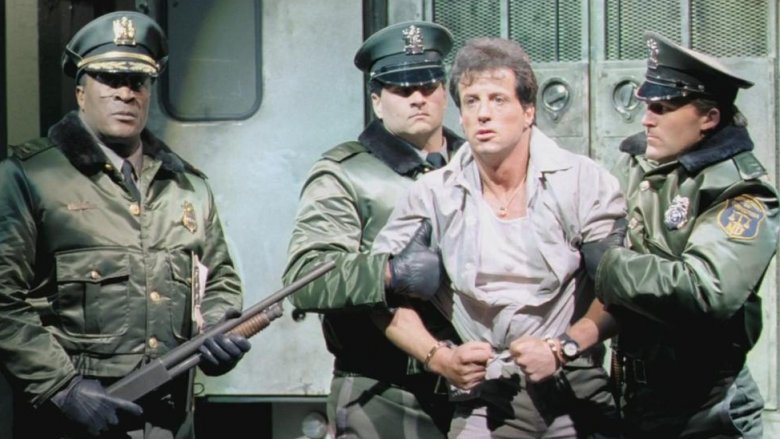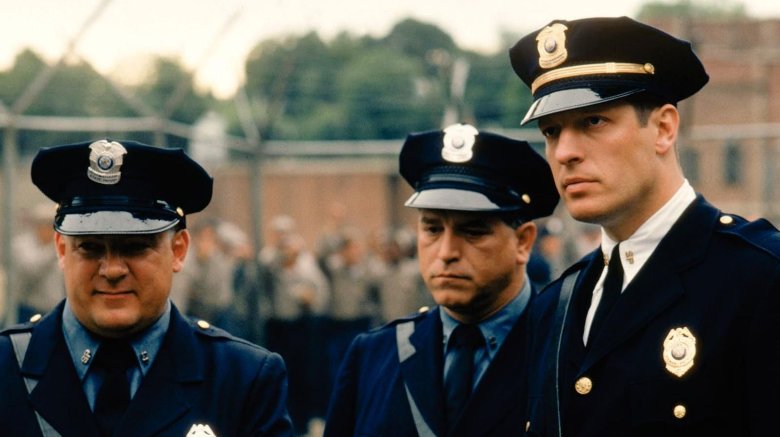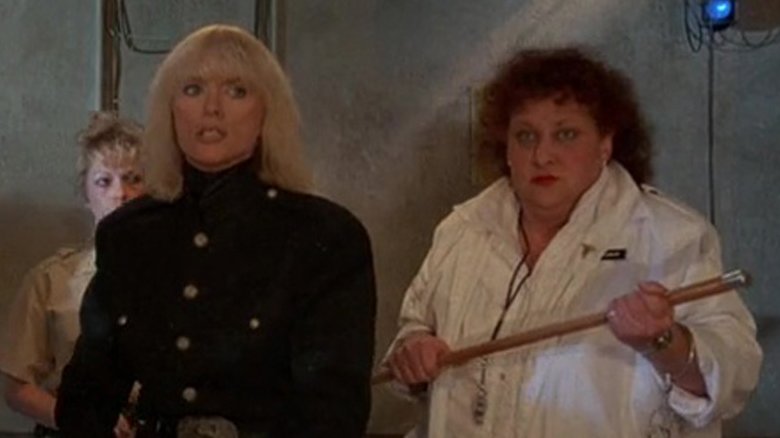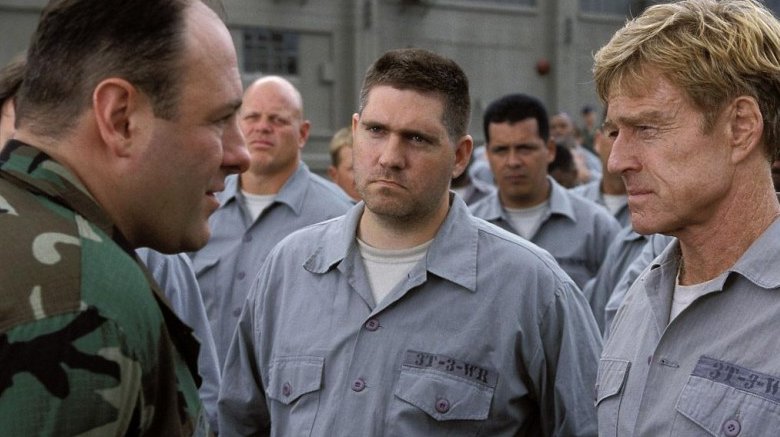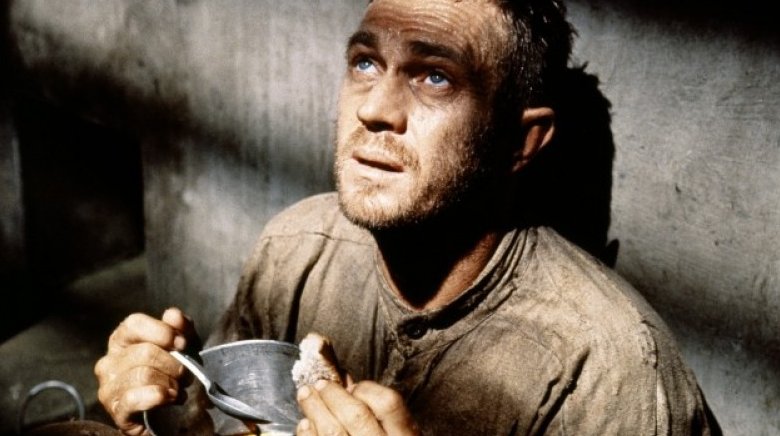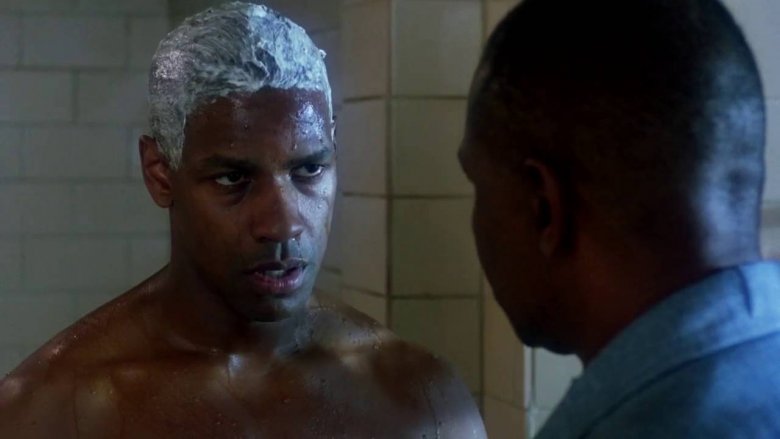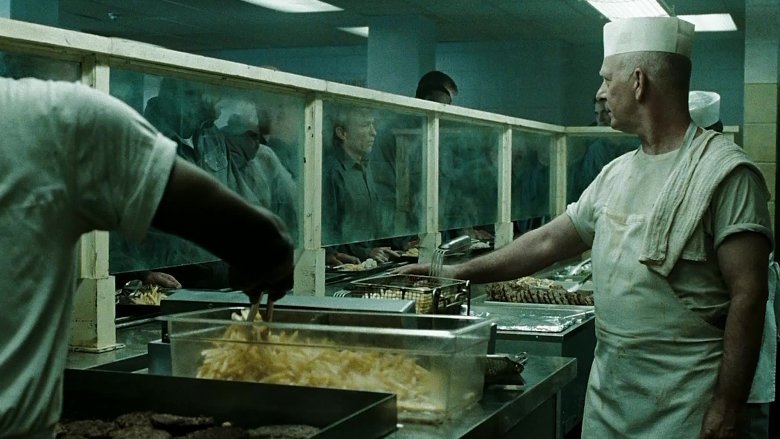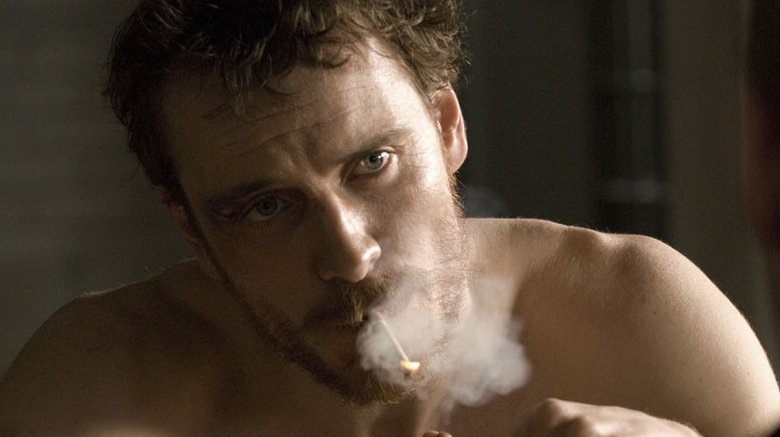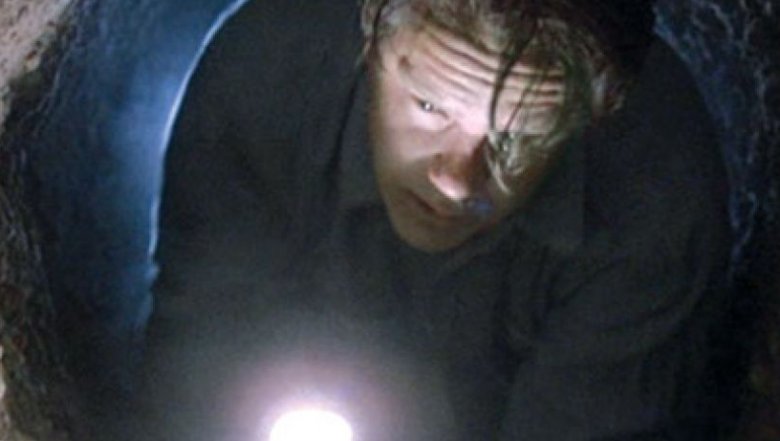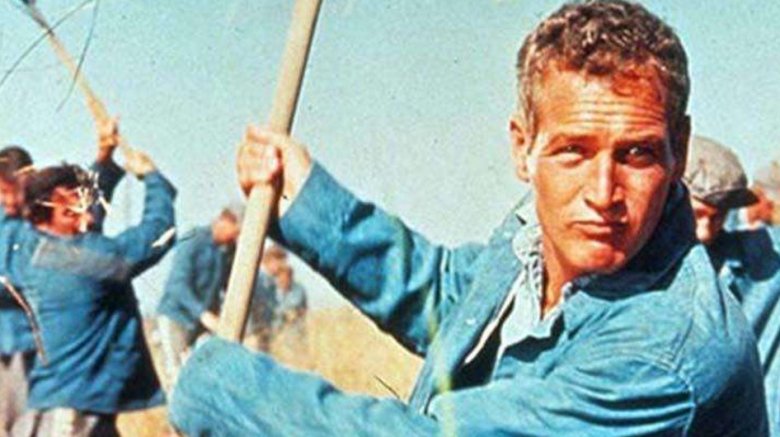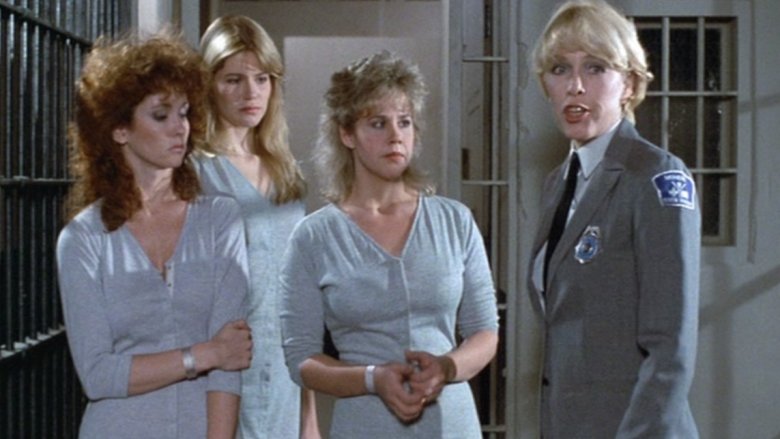Things Movies Always Get Wrong About Jail
The main difference between jail and prison is the length of an inmate's stay and why he's locked up in the first place. Jail is a state-run facility for short-term, usually misdemeanor offenders; the federal government is responsible for prisons, which house more violent criminals convicted of felony offenses for longer periods of time. But being locked up is being locked up no matter where you are... unless you're in the big house on the big screen, that is.
The entertainment industry is known for taking liberties with the truth in order to tell a great story, and the realities of incarcerated life are no exception. From riots and bartering to the ups and downs of actually guarding lockup, here's a look at some of the most common misconceptions filmmakers tend to turn to when attempting to depict an inmate's existence. These are the things Hollywood always gets wrong about jail.
Prison guards are the real bad guys
The Bulls. The Screws. The Goons. There are plenty of names for guards in prison films like The Shawshank Redemption. They're usually played as the heavies, while the anti-hero prisoners get the viewers' sympathy to drive the plot. But prison isn't fun for anyone — even the guards (also called correctional officers, or C.O.s). Their job is inherently dangerous, the pay isn't great, and they're outnumbered by angry, sometimes aggressively violent inmates.
In recent years, reports of assaults on correctional officers have been on the rise across the United States. There can be two dozen reported assaults in one facility, less than ten in another, and while still relatively minor compared to the number of C.O.s employed in correctional institutions — just over 428,000, according to a May 2017 report from the Bureau of Labor Statistics — the job is still second only to line of duty officers in overall incidents of assault.
The job seems even more thankless when you consider how much a C.O. earns: 50 percent take home less than $21 an hour, for an annual wage of $43,000. While there are too many variables for completely accurate numbers, some stats anecdotally have guards being outnumbered by inmates at a rate of anywhere from five to one to almost ten to one.
Just like every prisoner, every guard has a story to tell. And they deserve to be heard too.
Wardens are sleazy, crooked sadists
The stereotypical prison flick warden ranges from to steely-eyed James Cromwell in The Longest Yard to Reform School Girls' statuesque Sybil Danning. The movie warden is corrupt, bitter, and tough — and always gets it in the end. But in reality, prison wardens aren't much better off than correctional officers. Their job is mainly administrative, it takes a long time to earn the position, and it doesn't pay very well relative to the duties and experience necessary to achieve it.
Anyone wanting to become a prison warden needs at least a high school diploma or equivalent. Earning the title ultimately begins by having a career in law enforcement, working your way up the ranks from police officer or correctional officer or some other position related to criminal justice. Depending on where you apply, you might need a degree in criminal justice (not always necessary, but it can help); good problem-solving abilities; considerable management skills; a head for administration, and solid leadership ability. You'll obviously have to pass a background check, a drug test, and you'll need to have firearms training and a license to carry.
This obviously takes years to achieve. And the payoff? An average annual salary of around $84,000 to over $180,000 once you have about a decade's worth of experience. In addition to accumulated experience, other salary factors include where your prison is located, the size of the institution, and your previous work history.
Prison riots go on for days
Prison riots don't start with a lone inmate clanging his tray on a mess hall table while other cons storm the warden's office with a laundry list of demands. They don't go on for days and days, either, like in Riot or The Last Castle. They're violent, sometimes deadly affairs, to be sure, but they're usually disputes between inmates, and they're usually quashed as quickly as possible.
The worst prison riot in American history lasted for 11 days in Santa Fe, New Mexico, but that event was a serious outlier. The April 2018 riot at Lee Correctional Institute in Bishopville, South Carolina, which claimed the lives of seven inmates and injured 17 others, was the deadliest such uprising in an American prison in 25 years — and it was over in about seven hours. It was caused, like many such incidents, by a battle over money and illegal property. None of the officers at the prison were in danger, according to reports, and no stolen or smuggled firearms were involved. All the victims were stabbed.
Most acts of prison violence are individual or isolated incidents, and they occur in higher security facilities where more violent prisoners are kept. Sex offenders and snitches fare the worst in these situations. In extreme cases when such an inmate has been attacked (or worse), it's not unusual for them to be taken out of the general population ("gen pop" for short) and placed in 23-hour lockdown or isolation. For their own protection, of course.
Solitary confinement isn't so bad
The screen is black. The shuffle of footsteps, then blinding light as a door opens and a con is tossed in the Hole. The door clangs shut. That scene has been in tons of prison flicks like Papillon, but the reality of solitary confinement is even more horrible than what you see in the movies.
Being thrown in the Hole isn't for an inmate's protection, and it's not an innocent form of punishment. For years, organizations like Amnesty International (AI) and the United Nations (UN) have worked to expose the truth of solitary confinement and its debilitating effects. Case in point: California, where AI reports thousands of inmates have been held in 23-hour-a-day lockdown, denied any meaningful human contact. Some 500 people have been in solitary for up to 16 years. Almost a hundred were confined for more than two decades. And that's just in California.
Psychology Today breaks it down: long-term solitary confinement results in paranoia, depression, and attempted and successful suicide. As punishment, solitary has been found to be possibly counterproductive, leading to violent reactions from inmates and increased recidivism after release. At best, it's a passive form of brainwashing. At worst, it's state-sanctioned psychological torture. The good news is that some countries are attempting to curb the use of solitary confinement. Canada has banned its use for more than 14 consecutive days at a time (this ban has yet to be implemented). The UN declared it a form of torture in 1984. And while arguments have been made in the U.S. about its use, no significant action by the Supreme Court has seen fit to eliminate it.
You'll get beat up (or worse) in a jailhouse shower
Prison showers aren't necessarily the hellholes you see in movies like American History X. Most showers and toilets in the federal prison system provide at least a basic level of privacy, with curtains or stall doors replacing the open-air showers you see in films.
It's best to shower when there are fewer people around, and there's always the buddy system — kind of "You watch my back, and I'll watch yours." There's an etiquette to shower time too, and as long as you follow it, you should be okay. Remember when your college roommate let you (and everybody else) know he had someone over by hanging a sock on the doorknob? The same system is used behind bars. If you see a towel hanging on the toilet or shower stall door, that's a sign it's in use or will be soon. As with most things in prison, respect other people's privacy, and they'll respect yours.
Content Warning: Increased reports of sexual assault in prison showers and elsewhere remains a problem, but some believe that points less to a rise in activity than a sign that the Prison Rape Elimination Act is making it easier for sexual assault victims to seek help and therapy. It's also believed that sexual assault in prison is often doled out as a punishment as opposed to a way for the attacker to get off; there are more than enough inmates willing to have sex for protection and companionship until they're released.
Prison food isn't fit for a dog
Green baloney sandwiches and juice boxes aren't on every prison menu, but jailhouse grub isn't health food, either. The American prison system seems to be trying, though. The Bureau of Prisons website published their menu for the Fiscal Year 2018, and to be honest, the food doesn't actually sound too bad. Except for the fact that you're eating it in prison.
Set up on a five-week schedule, Thursday lunch during Week Two, for example, is a choice of either fried or baked chicken or a soy chicken patty with mashed potatoes, carrots, chicken gravy, whole wheat bread with a pat of margarine, your choice of fruit or dessert, and a "beverage." Week Three's Tuesday dinner will serve up your choice between pepper steak and tofu stir fry served with green beans, steamed rice, whole wheat bread... and a "beverage."
Surprisingly, prisons now make accommodations for kosher food on their "Religious Diet Specifications Quote Sheet" and serve up vegetarian meals like soy burgers, hummus wraps, and the classic PB&J (crust status undetermined), which they give the almost ethical sounding label of "No Flesh Entrees." We're betting that vegans are still screwed, though. Some items, like the carrots, fruit, bread, and margarine are also listed as "heart healthy."
The most interesting thing about the menu, though, is that it doesn't include breakfast. Don't they know it's the most important meal of the day?
Cigarettes are as good as money
One of the most enduring tropes about prison, onscreen and off, is that cigarettes are as good as cash. That may have been true at one point, but not anymore. Most American prisons are essentially smoke-free now, out of concern about lawsuits over the long-term effects of second-hand smoke on guards and inmates. So of course, cigs have gone from being valuable prison currency to being a black-market staple.
Let's be serious: Just because inmates aren't supposed to smoke in prison doesn't mean they don't, and just because cigarettes are banned doesn't mean you can't get them. We are talking about prison, after all, and just about anything can be smuggled in. But even inmates who aren't master smugglers can still enjoy a smoke thanks to a combination of leaf tea, nicotine lozenges, and maybe the greatest jailhouse commodity of all — ingenuity — known on the inside as "teabacco." The good news, in a sense, is that over a dozen states still allow inmates to smoke, and so the war on teabacco is being won.
As far as other types of prison currency, there are still plenty of ways to get what you want. Bartering with commissary goods like postage stamps, coffee, and packets of ramen soup is still a good method. There's also intimidation, bribery, and good old-fashioned theft, too. We are talking about prison, after all.
You can just tunnel your way to freedom
It's not impossible to break out of prison if you're in a lower-security facility, but it doesn't happen as often (or as easily) as The Shawshank Redemption would have you think. Research shows that in 2013, out of about 1.6 million federal prisoners, just over 2,000 made their escape. But prison escapes are elaborate and take plenty of planning. Among the tools used in the past, successfully or not, have been laundry baskets, nectarines (and a helicopter), and even coffins.
That's not to say tunnels never work. Drug kingpin Joaquin "El Chapo" Guzman famously tunneled out of a Mexican prison in 2015. But his greatest tool sure wasn't a spoon — it was most likely money. How else does a prisoner get the access, assistance and equipment to build a tunnel a mile long, with lighting, ventilation, and a motorcycle to transport dirt and supplies? A former associate of Guzman's testified in January 2019 that El Chapo had bribed Mexican President Enrique Peña Nieto to the tune of $100 million; 30 prison officials and workers were held for questioning by Mexican authorities after Chapo was finally captured. We're betting that money talked, and he walked.
Prison work is all license plates and laundry
Hollywood films like Cool Hand Luke and O Brother, Where Art Thou? have contributed to the cliché image of prisoners working on chain gangs along desolate highways, singing rhythmic, mournful spirituals, tending large prison farms, or stamping out license plates or bundling bed sheets. In reality, it's possible and in many cases beneficial to learn a viable skill or trade like woodworking or computer tech, but the burning question these days seems to be, who does prison labor really benefit?
Authorities maintain that learning a trade on the inside can help inmates find employment once they're released and reduce the chance they'll wind up back in custody. For many years, prison labor has also been seen as a cost-cutting measure, not only to maintain the buildings prisoners occupy but even to manufacture uniforms for the American military. There's also a chance that your last customer service call was routed through an American prison.
More recently, prisoner-rights advocates are finding the fruit of prison labor benefitting large corporations from Macy's to Nintendo, Intel, and even Victoria's Secret. Prison work is becoming seen as a form of institutionalized slavery, and there's a growing backlash against companies who rely on prison labor for their goods. Citing pay scales far below the minimum wage — in some states inmates may not even be paid for their labor — one group has advocated prison work strikes to bring it to an end.
Jail's full of hot babes and beefy studs
Doing time isn't like being an extra in Caged Heat. Jails house people from all walks of life. Some are true criminals, some are substance abusers, some just made bad decisions along the way — and there's hardly an Erica Gavin among them.
According to the Federal Bureau of Prisons, more than one-third of inmates in the United States are in their mid-30s to mid-40s; two-thirds are classified as "non-Hispanic" (meaning one of four designated race groups, with an ethnicity of either Hispanic or not); and, at over 93 percent, they are overwhelmingly male.
It's true that America houses more convicted criminals per capita than any other country. Recent statistics show almost 2.4 million people currently behind bars, but most of them are not, despite what you've heard, in prison on drug offenses. More than twice as many prisoners are what's known as "violent offenders" as opposed to people in jail on drug raps. Drug offenders are the minority in state prisons, but a larger part of the federal system population, and most of those arrested for drug-related crimes are nabbed for possession, not for sale.
The Bureau of Justice Statistics is responsible for maintaining records of all aspects of the American criminal justice system, including a Census of Jail Inmates and Prison Facilities. If those statistics show anything, it's that anyone, at any time, could find themselves in the U.S. criminal justice system.
